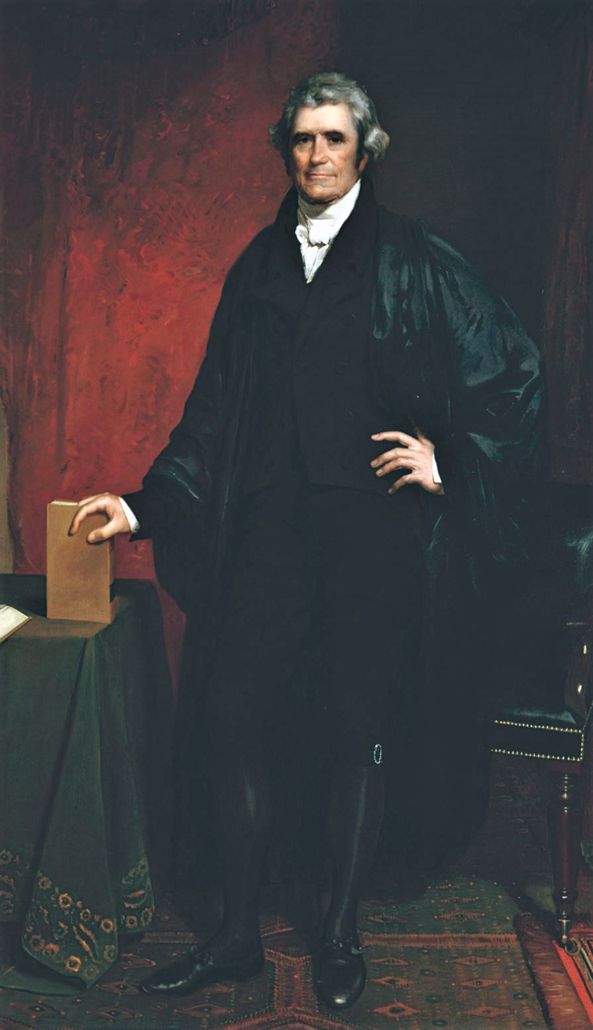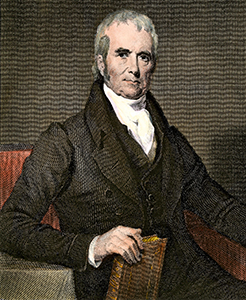John Marshall
September 24, 1755 – July 6,1835
The life of John Marshall, founder of the modern American judiciary and longest serving Chief Justice of the United States, parallels the unfolding of the American experiment in self-government. Coming of age with the new nation, Marshall fought for independence, then served in all three branches of the federal government. During his thirty-four years as Chief Justice, Marshall made his most lasting contributions to the nation by developing the Court into what it is today—a co-equal branch of the federal government with powers to check and balance those of the executive and legislative divisions. John Marshall’s body of work strengthened a fragile early Republic, was later foundational to civil rights, and continues to uphold the Supreme Court’s authority to judge the constitutionality of state laws, acts of Congress, and those of the President.
PATRIOT
In 1775, 19-year-old John Marshall joined his father as a Culpeper Minuteman; the following year, he transitioned to a militia within George Washington’s Continental Army.
STATESMAN
In the 1790s, the nation was divided over its relations with warring Britain and France, and international hostilities continued into the Adams administration. When France severed diplomatic ties, John Adams, in search of peace, sent John Marshall as one of three envoys to Paris.
CHIEF JUSTICE
The framers of the U.S. Constitution spent little time defining the judicial branch. Unlike articles outlining the legislative and executive branches, Article III of the Constitution is short and lacks specificity about how a judicial branch should function. John Marshall would deduce and unveil the powers of the Court that the framers envisioned.
FAMILY
John Marshall was born in a cabin at the foothills of the Blue Ridge Mountains in what is now Fauquier County, Virginia. The oldest of fifteen children, Marshall was the son of Mary Randolph Keith and Thomas Marshall. Thomas, a close friend of George Washington, was a surveyor for Lord Fairfax.
JOHN MARSHALL and SLAVERY
John Marshall, like most of Virginia’s middle and upper classes at the turn of the 19th century, inhabited a world inextricably linked to and dependent upon the institution of slavery. While he left behind little evidence that would allow contemporary historians to fully understand his personal views on slavery, the limited information below can help us understand how Marshall interacted with a society that depended on enslaved labor to function.
On This Day In History

Chief Justice Marshall (1755-1835) oil on canvas by Chester Harding
Resources
John Marshall Freedom Cases
The Legacy of Chief Justice John Marshall, Cleveland Marshall Law School
Charles F. Hobson’s review of Supreme Injustice by Paul Finkelman
John Marshall Center for Constitutional History & Civics
Mailing Address
PO Box 7090
Richmond, VA 23221
Physical Address
Virginia Museum of History & Culture
428 N. Arthur Ashe Blvd.
Richmond, VA 23220
Phone: 804.775.0861
John Marshall Center for Constitutional History & Civics is a non-partisan, non-profit 501(c)(3) tax-exempt organization.
All donations are tax-deductible to the extent allowed by law.



